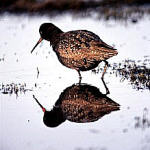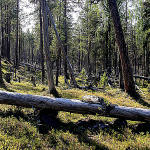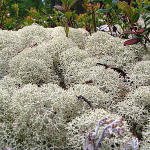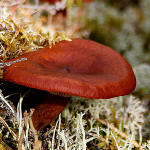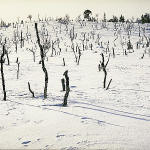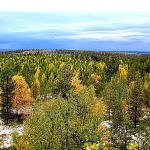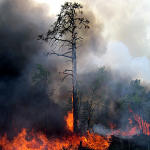

Home
Area
Vätsäri
Övre Pasvik
Pasvik Zapovednik
Nature
Geology
Climate
Water system
Flora
Fauna
Culture
Population
Religion
Sources of livelihood
Old ways of life
Time of industrialism
History
Stone Age
Early Metal Age
Late Metal Age
Middle Ages
Towards modern times
Timeline
Cooperation
Nature monitoring
Nature tourism
Publications
Contacts
Visit Pasvik-Inari
Guidelines
Regulations
News
Links
Nature
On the edge of boreal forest
The Pasvik Valley and its surrounding wilderness are located in the northwest edge of the taiga, boreal forest zone, from where the mountain birch forest extends towards the north. Large marshes surround the river and the continuous pine forest covers a large area from Lake Inari to Pasvik Zapovednik. The low hills are mostly forest-covered. The dominating species is Scots pine (Pinus sylvestris), but also birch (Betula pubescens), aspen (Populus tremula) and goat willow (Salix caprea) grow in the wilderness. The northernmost place where silver birch (Betula pendula) grows lies slightly north of Kyyneljärvi, and Pasvik Valley in Norway.
Mosaic of forest, bogs and ponds
The rocky shores of the great lakes open between the pine stands. Thousands of small bogs and ponds form an almost impassable labyrinth. Various kinds of fens and bogs fragment the area. Large open mires are rare in the wilderness, but near the Pasvik River several large mires and wetlands open. The tussocks on the palsa mires in Norway and Russia have an ice core.
Old and young forest
In the north the pine forest is short due to the harsh northern living conditions. In the core of the wilderness the pine forest has developed without great impact caused by human activities. Old, thick and short pines grow in the surroundings of the highland of Vätsäri. The Russian border district has been partly unreachable by people. Øvre Pasvik National Park contains the largest area of continuous old growth forest in Norway. Old trees, over 300-400 years of age, are found in the area.
The forest has naturally not survived the changes. The birch forest of the Vätsäri highland never recovered from the defoliation caused by the outbreak of the autumnal moth (Epirrita autumnata) larvae in the 1960s. Forest fires have been an important factor in forest renewing, and traces of past fires are seen in old trunks. The fires have created light spots for new seedlings to grow. The humans have influenced the forest structure by effectively putting out the fires. In the Kessi, south from Vätsäri, the old stumps tell of past loggings.
